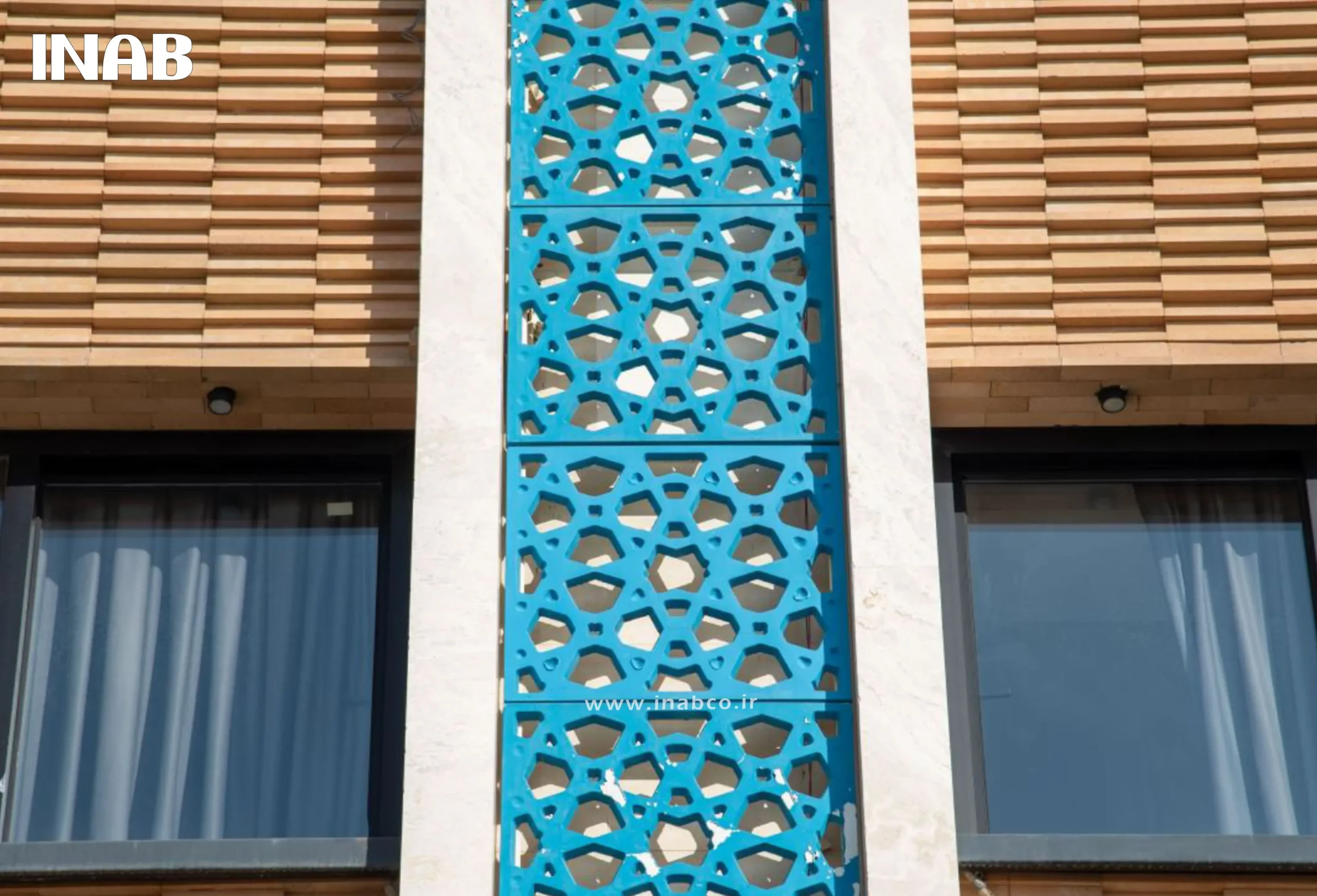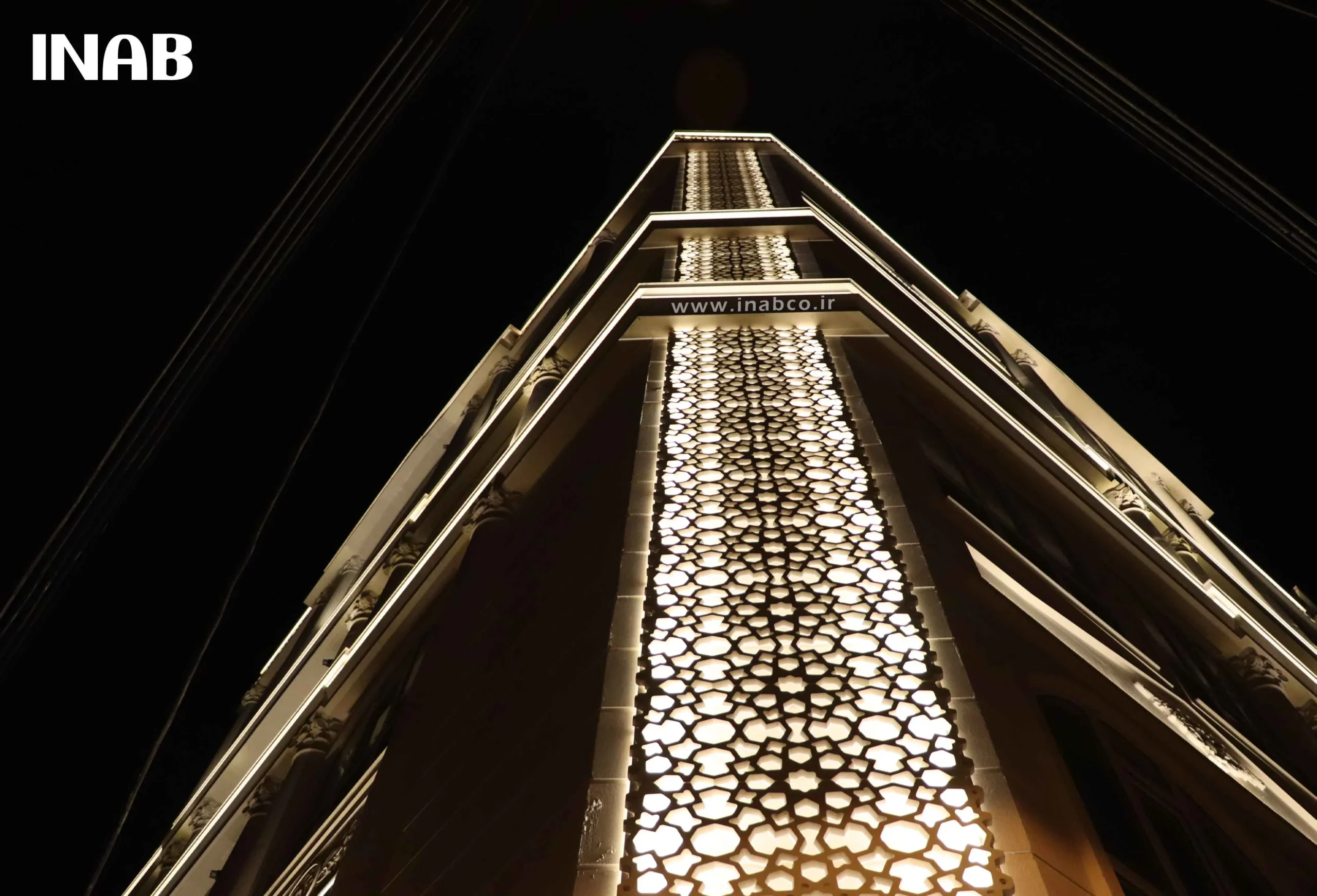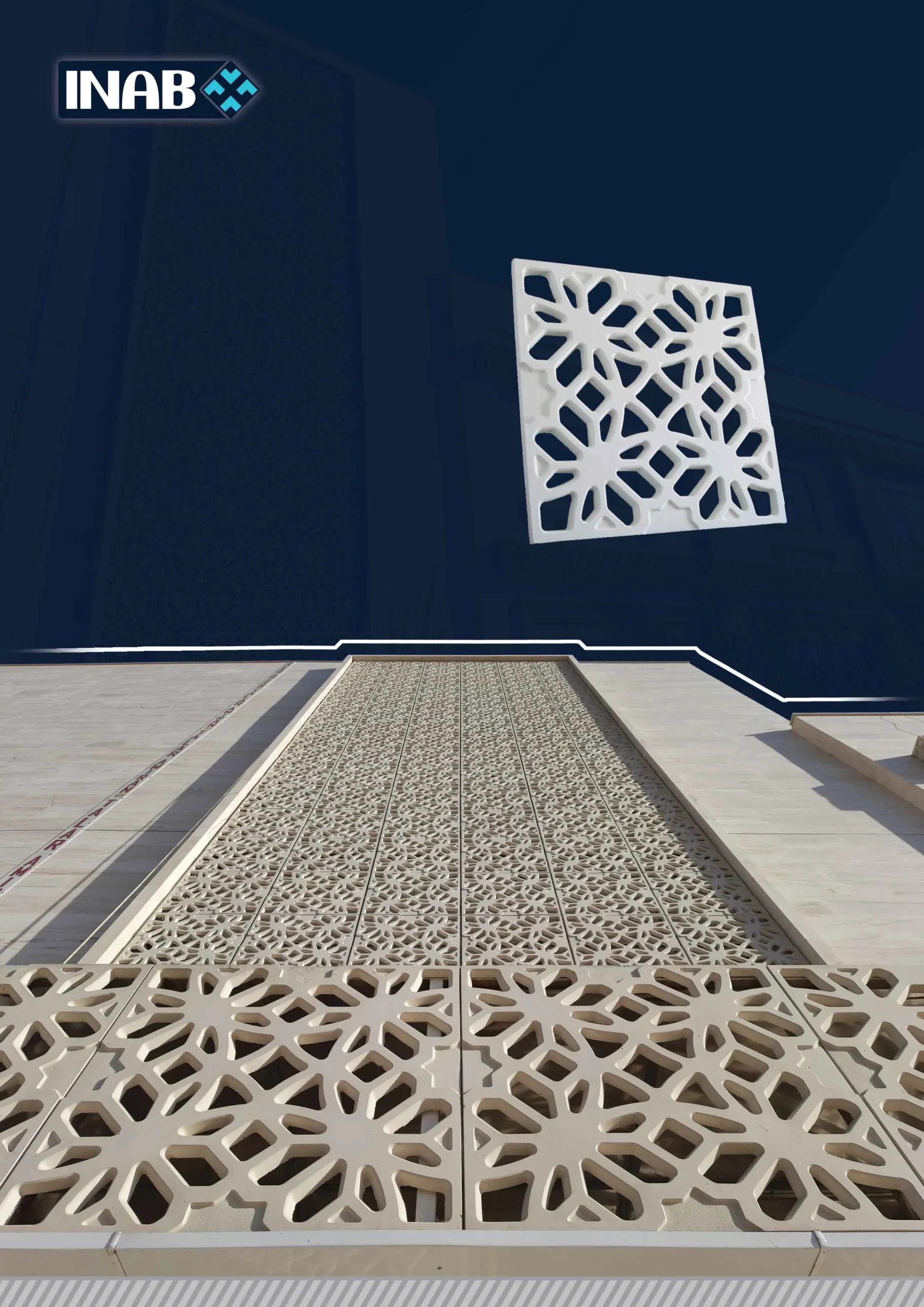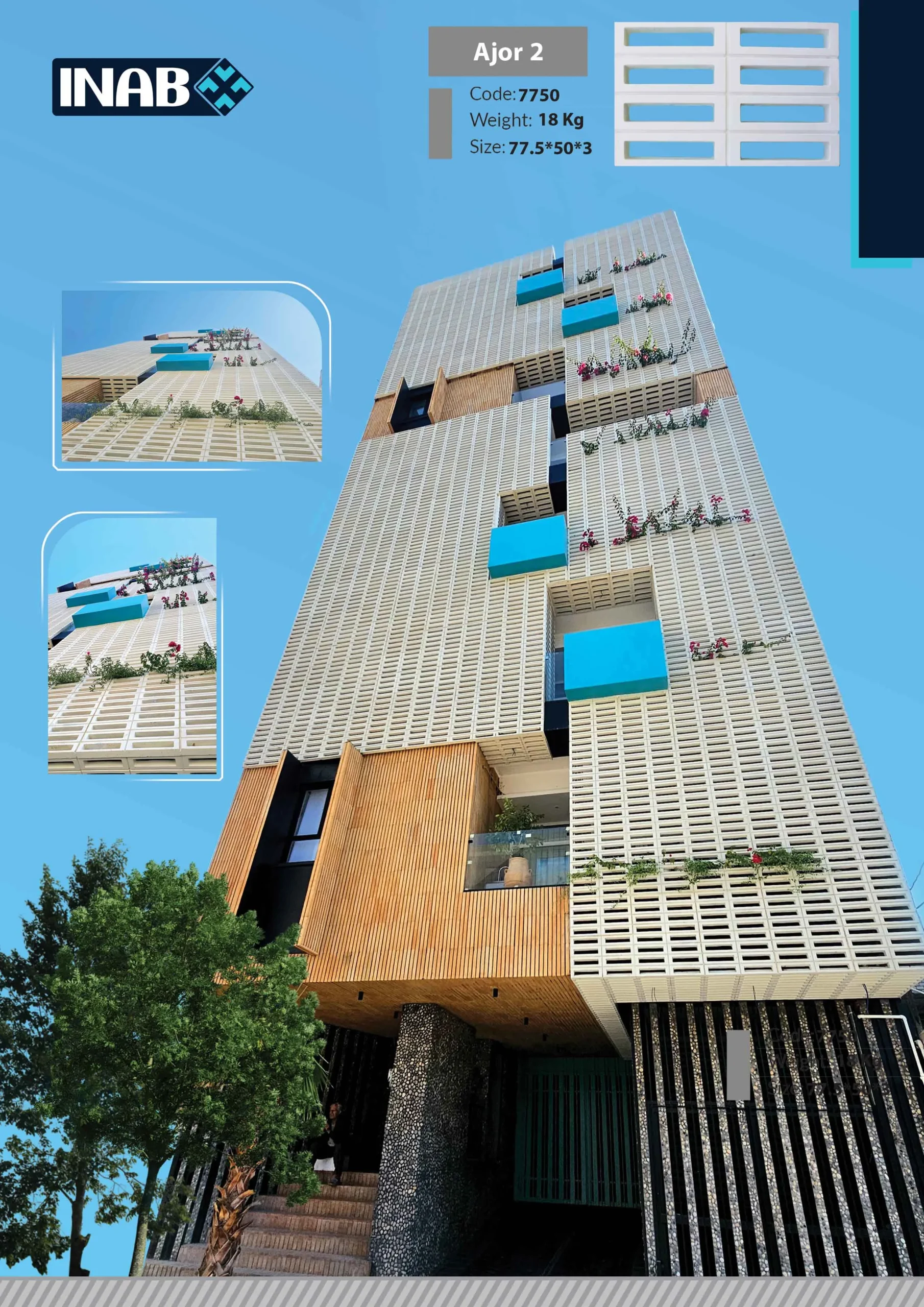what is GFRC – GRC
GFRC (Glass Fiber Reinforced Concrete) is a high-performance composite material composed of Portland cement, fine aggregates, water, acrylic co-polymers, alkali-resistant glass fibers, and specialized additives. In many international markets, it is also known as GRC (Glassfibre Reinforced Concrete).
The inclusion of glass fibers within the concrete matrix serves a similar function to steel reinforcement in traditional concrete, significantly enhancing its flexural and tensile strength. This superior reinforcement allows GFRC to be used in thin-wall casting applications while maintaining durability and structural integrity.
As a lightweight yet robust material, GFRC offers remarkable versatility, enabling designers and architects to create intricate, customized forms with an extensive range of shapes, colours, and textures. It is widely utilized in architectural facades, decorative elements, and prefabricated building components due to its aesthetic adaptability and resilience.

There are two primary methods for fabricating GFRC:
- Spray-Up Process: Where the GFRC mixture is sprayed into molds, allowing for complex, detailed surfaces.
- Premix Process: Where the ingredients are blended before casting, ensuring uniformity and consistency in production.
GFRC’s unique properties make it an innovative and sustainable solution for modern construction, offering a balance of strength, durability, and design flexibility.

Why Choose GFRC?
GFRC (Glass Fiber Reinforced Concrete) is a superior choice for projects that demand a lightweight yet durable material. Here are some standout benefits that make it the preferred solution in modern construction:
- Lightweight & High Strength: GFRC offers exceptional tensile and flexural strength while being significantly lighter than traditional concrete, reducing structural loads and installation costs.
- Design Versatility: It can be cast into complex shapes, intricate details, and custom textures, making it ideal for architectural facades, decorative elements, and unique designs.
- Durability & Weather Resistance: Resistant to cracking, shrinking, and extreme weather conditions, GFRC ensures long-lasting performance in diverse environments.
- Fire & Moisture Resistance: Its non-combustible nature and resistance to water absorption make it an excellent choice for both interior and exterior applications.
- Eco-Friendly & Sustainable: GFRC requires less raw material, reduces carbon footprint, and can incorporate recycled components, making it an environmentally responsible option.
- Fast & Efficient Installation: Due to its lightweight properties, GFRC panels and components can be quickly installed, reducing labor costs and project timelines.
With these advantages, GFRC stands out as a cutting-edge material that combines strength, beauty, and efficiency, making it the go-to choice for architects, builders, and designers worldwide.

What Types of Projects is GFRC Suited For?
Originally developed for architectural concrete applications, GFRC (Glass Fiber Reinforced Concrete) has become the go-to material for both traditional and contemporary designs. Its lightweight, high-strength, and moldable nature make it ideal for a wide range of projects, including:
Architectural & Building Elements:
- Wall panels & facade cladding: Enhancing buildings with lightweight, durable, and aesthetically appealing surfaces.
- Window surrounds & column covers: Adding decorative and functional details to exteriors and interiors.
- Soffits, cornices, brackets & quoins: Creating intricate architectural accents with superior durability.
- Railings, pilasters & copings: Providing strength and design flexibility for structural elements.
- Domes & ornamental features: Enabling the construction of complex, lightweight domes and artistic elements.

Urban & Landscape Design:
- Site furnishings & planters: Offering stylish and long-lasting outdoor solutions.
- Bollards & urns: Combining security with aesthetics for public and private spaces.
- Tables & benches: Delivering durable, weather-resistant seating and surfaces.
Modern & Creative Applications:
GFRC has evolved into a highly versatile material for innovative concrete designs, such as:
- Countertops & sinks: A preferred choice for sleek, durable, and custom-crafted surfaces.
- Furniture & fire pits: Bringing strength and artistic expression to indoor and outdoor spaces.
- Fireplace surrounds & decorative wall panels: Providing elegance with endless design possibilities.
Limitless Design Possibilities
Just like traditional concrete, GFRC supports a variety of artistic embellishments, including:
- Acid staining, dying & integral pigmentation: Creating vibrant, custom colors.
- Decorative aggregates & veining: Enhancing texture and visual appeal.
- Etching, polishing, sandblasting & stenciling: Achieving refined and intricate finishes.
With GFRC, if you can imagine it, you can create it. Whether for architectural, artistic, or functional applications, GFRC provides a lightweight, durable, and highly customizable solution for designers and builders worldwide.

Key Components of GFRC: What’s in the Mix?
Understanding the ingredients in GFRC is essential for producing a high-quality, durable, and high-performance final product.
1. Portland Cement
The primary binding agent in GFRC, providing strength and durability to the mix. High-quality white or gray Portland cement is commonly used.
2. Fine Aggregates
Silica sand or other fine aggregates are used to improve workability, density, and surface finish while reducing shrinkage.
3. Water
Water activates the cement’s hydration process, ensuring proper curing and strength development. The water-to-cement ratio is carefully controlled to maintain optimal performance.
4. Alkali-Resistant (AR) Glass Fibers
Unlike regular glass fibers, alkali-resistant glass fibers are specifically designed to withstand the high alkalinity of cement, providing flexural and tensile strength to GFRC. These fibers act as reinforcement, much like steel does in traditional concrete.
5. Acrylic Co-Polymer
Acrylic polymer additives enhance flexibility, adhesion, water resistance, and durability, preventing cracking and improving the long-term performance of GFRC.
6. Admixtures & Additives
To optimize workability, curing, and setting time, various admixtures can be included:
- Superplasticizers: Improve fluidity without increasing water content, ensuring better compaction and surface detail.
- Curing agents: Aid in moisture retention for optimal curing and long-term strength.
- Accelerators or retarders: Adjust setting times based on environmental conditions and production needs.
7. Pigments & Decorative Aggregates (Optional)
For custom colors and textures, integral pigments, stains, or decorative aggregates can be added to enhance the aesthetic appeal of GFRC.
A Perfect Balance for Performance
Each of these components plays a crucial role in creating a lightweight, durable, and versatile material. The precise formulation of GFRC can be adjusted depending on the application, whether for architectural facades, decorative elements, or innovative concrete designs.

How GFRC Concrete is Made?
The production of Glass Fiber Reinforced Concrete (GFRC) involves specialized techniques to ensure an even distribution of glass fibers, resulting in a high-quality, durable, and uniform finish. There are two primary methods for producing GFRC: the Spray-Up Method and the Premix (Direct Cast) Method, each suited to different applications and project sizes.
1. Spray-Up Method
The Spray-Up method is applied similarly to shotcrete, where the GFRC mixture is sprayed into molds. This process involves a specialized spray gun that simultaneously cuts and sprays long glass fibers from a continuous spool into the concrete mix. The sprayed mixture is then applied directly into forms, creating high-strength GFRC.
Key Advantages:
- High fiber load: Resulting in superior tensile and flexural strength.
- Long fiber length & optimal orientation: Providing enhanced structural performance.
However, the Spray-Up method requires expensive equipment (often costing $20,000 or more), making it more suited to large-scale applications or high-performance projects.
2. Premix (“Direct Cast”) Method
In the Premix method, glass fibers are directly mixed into the concrete before pouring or spraying the mixture into molds. This method works well for smaller projects or applications requiring thicker layers of GFRC, such as countertops or furniture pieces.
Key Characteristics:
- Glass fibers are randomly distributed throughout the mixture, which may result in a slightly weaker product compared to Spray-Up.
- Ideal for thick layers of GFRC, often used in countertop production or smaller-scale applications.
The Premix method is popular among concrete countertop manufacturers, where it’s often referred to as “direct cast”. However, one of the risks with this method is that fibers may be visible on the surface of the finished product. This can be mitigated by using specialized alkali-resistant (AR) glass fibers, specifically designed for countertop applications rather than for building panels.
Hybrid Method
Many concrete countertop makers use a hybrid approach, combining elements from both the Spray-Up and Premix methods to optimize fiber distribution and strength.
Choosing the Right Method
- Spray-Up: Ideal for large-scale projects or when high strength and fiber load are required.
- Premix (Direct Cast): Suited for smaller projects or thicker layers, where flexibility and ease of use are essential.
Both methods offer unique benefits depending on the scale and specific needs of the project, with the ability to create highly customizable, durable, and artistic GFRC elements.

Curing GFRC?
One of the key advantages of GFRC (Glass Fiber Reinforced Concrete) is that its high polymer content reduces the need for long-term moist curing, unlike traditional concrete. This characteristic allows for faster processing and shorter curing times.
Curing Process
After casting, simply cover the freshly cast piece with plastic overnight to retain moisture and prevent rapid drying. The curing time can be shortened if the piece has gained enough strength to be safely uncovered and processed.
- Typical Stripping Time: Many GFRC pieces are stripped from their molds 16 to 24 hours after casting, depending on the environmental conditions and the mix’s strength.
- Quick Handling: Once the piece has sufficient strength, it can be further processed or handled, reducing overall production time.
his faster curing method enhances the efficiency of GFRC production, allowing for quicker turnarounds on projects without compromising the material’s performance.

Processing GFRC?
Once your GFRC (Glass Fiber Reinforced Concrete) countertop is removed from its mold, the amount of processing required will depend on factors such as your skill level, the composition of your mix, and the method used for casting. The goal is to refine the surface and ensure the final product meets your desired finish.
Processing GFRC
Once your GFRC (Glass Fiber Reinforced Concrete) countertop is removed from its mold, the amount of processing required will depend on factors such as your skill level, the composition of your mix, and the method used for casting. The goal is to refine the surface and ensure the final product meets your desired finish.
Steps in Processing GFRC:
- Grouting
If there are any bug holes or surface imperfections, grouting may be necessary. This process involves filling in the voids or irregularities to create a smooth, even surface. Specialized grout mixtures can be used to blend seamlessly with the GFRC material. - Cleaning Blowback
Blowback refers to the sand and concrete that does not adhere to the molds during casting. If not cleaned properly, these areas will leave the concrete surface open and granular, affecting the overall appearance and finish. Ensure that any blowback is cleaned thoroughly to maintain the integrity of the surface. - Smoothing and Refining the Surface
Achieving a perfect finish right out of the mold can be challenging and requires a certain level of skill and practice. Additional smoothing, polishing, or etching may be needed to eliminate imperfections and achieve the desired aesthetic appeal.
- Grouting
Skill and Practice Matter
Processing GFRC requires a balance of technique and experience. While the material has inherent workability, it is the craftsmanship that will elevate the final piece. Mastery of the process leads to a more uniform, flawless surface and a successful final product.
By honing your technique and understanding the nuances of the material, you can minimize processing time and ensure high-quality results for your GFRC projects.

Common Questions about GFRC (Glass Fiber Reinforced Concrete)
GFRC has gained significant popularity in construction and design due to its strength, versatility, and lightweight nature. Below are some of the most frequently asked questions regarding GFRC, along with their answers:
1. What is GFRC, and what makes it different from traditional concrete?
GFRC (Glass Fiber Reinforced Concrete) is a composite material made by combining Portland cement, fine aggregates, alkali-resistant glass fibers, and other additives. Unlike traditional concrete, which uses steel reinforcement for strength, GFRC uses glass fibers to provide superior tensile and flexural strength while remaining lightweight and durable.
2. What are the main benefits of using GFRC?
- Lightweight: Significantly reduces the weight of the material, making it easier to handle and install.
- High Strength: Glass fibers provide excellent tensile and flexural strength, improving durability.
- Design Flexibility: Can be molded into complex shapes, textures, and sizes, offering design versatility.
- Fire Resistance: GFRC is inherently fire-resistant and non-combustible.
- Durability: Resistant to cracking, weathering, and extreme environmental conditions.
3. What types of projects is GFRC suited for?
- Architectural facades and cladding panels
- Decorative elements such as planters, fire pits, countertops, and furniture
- Building components like window surrounds, cornices, columns, and railings
- It is particularly useful in thin-wall casting, creative concrete designs, and large-scale architectural projects.
4. How is GFRC made?
GFRC is made using two primary methods:
- Spray-Up Method: A fiber chopper sprays the GFRC mixture into molds, applying glass fibers while spraying the concrete. This method is ideal for large-scale projects requiring high fiber content and strength.
- Premix (Direct Cast) Method: Glass fibers are mixed directly into the concrete and poured or sprayed into molds. This method works well for smaller projects or thicker layers of GFRC.
5. Is GFRC fire-resistant?
Yes, GFRC is naturally fire-resistant due to the non-combustible nature of its components, such as cement and glass fibers. This makes it an excellent material choice for fire-rated building applications and areas requiring heat resistance.
6. What is the curing process for GFRC?
GFRC’s high polymer content reduces the need for prolonged moist curing, unlike traditional concrete. After casting, cover the piece with plastic overnight to retain moisture, and the piece can typically be stripped from the mold after 16 to 24 hours, depending on the mix and environmental conditions.
7. How does GFRC compare to traditional concrete in terms of strength?
GFRC offers superior strength compared to regular concrete in terms of tensile and flexural properties, thanks to the glass fiber reinforcement. While traditional concrete relies on steel reinforcement, GFRC maintains high strength with the added advantage of being lighter and more flexible.
8. Can GFRC be used in outdoor applications?
Yes, GFRC is well-suited for outdoor applications. Its weather-resistant properties, including moisture resistance and freeze-thaw durability, make it ideal for facades, outdoor furniture, planters, bollards, and architectural details exposed to the elements.
9. Can GFRC be painted or colored?
Yes, GFRC can be easily colored, stained, or pigmented using integral pigmentation, acid staining, or decorative aggregates. The versatility in finishing allows designers to achieve a wide range of aesthetics, from natural stone-like finishes to vibrant custom colors.
10. Is GFRC cost-effective?
GFRC can be cost-effective depending on the project scope and the methods used. While the initial investment in equipment (especially for the Spray-Up method) can be high, the material’s lightweight nature reduces transportation and installation costs. Additionally, its long-term durability and minimal maintenance make it a cost-effective option in the long run.
11. Can GFRC be used for countertops?
Yes, GFRC is highly popular for countertops due to its strength, lightweight nature, and design flexibility. Specialized AR (Alkali-Resistant) glass fibers are used to ensure resilience and surface integrity, making it an ideal material for kitchen and bathroom countertops.

Interesting Facts about GFRC (Glass Fiber Reinforced Concrete)
GFRC is a remarkable material with a wide range of unique properties that make it stand out in the construction and design industries.
1. Originated in the 1970s
GFRC was first developed in the 1970s as a solution for creating lightweight, durable concrete elements with improved performance. It quickly became popular in architectural applications due to its ability to be molded into complex shapes and designs.
2. Lighter Than Traditional Concrete
Despite its superior strength, GFRC is significantly lighter than traditional concrete. It can be up to 70% lighter, making it easier to handle and install, especially in large panels or prefabricated pieces.
3. Can Be Cast into Complex Shapes
One of the standout features of GFRC is its moldability. It can be cast into almost unlimited shapes, from intricate architectural facades to custom furniture. This makes it highly popular in architectural design, where unique and artistic features are desired.
4. Alkali-Resistant Glass Fibers
GFRC is reinforced with alkali-resistant (AR) glass fibers, specifically engineered to resist the alkalinity of concrete. This innovation gives GFRC its strength and durability while avoiding the corrosion issues that can affect traditional steel-reinforced concrete.
5. Can Be Used in Thin-Wall Applications
Because of its high tensile strength and lightweight nature, GFRC can be used in thin-wall casting applications, such as facade panels and cladding. This allows for the creation of architectural elements that are not only aesthetically pleasing but also structurally sound without the need for thick, heavy concrete.
6. Highly Customizable
GFRC can be customized in terms of texture, color, and finish. It can be pigmented, stained, etched, or polished to create virtually any desired effect, from natural stone textures to vibrant, colorful designs.

7. Fire-Resistant
GFRC is inherently fire-resistant due to its non-combustible components, including Portland cement and glass fibers. This makes it an ideal material for fire-rated building applications or areas that need to withstand high heat, such as fireplaces, fire pits, and building facades.
8. Eco-Friendly Material
GFRC can be environmentally friendly, especially when recycled glass fibers are used in the mix. Additionally, it requires fewer raw materials compared to traditional concrete, which can help reduce the carbon footprint of construction projects.
9. Minimal Maintenance
Once installed, GFRC requires very little maintenance. Its weather resistance, resilience, and non-porous nature mean it will not deteriorate or stain easily, making it an ideal material for exterior applications like facades, wall cladding, and site furniture.
10. Used for Creative Concrete Applications
While GFRC has been widely adopted for traditional architectural applications, it is also increasingly used for creative concrete applications such as countertops, bathroom sinks, furniture, decorative wall panels, and even art installations. Its versatility allows designers to push the boundaries of what concrete can do.
11. Resistance to Cracking
GFRC is less prone to cracking compared to traditional concrete due to its fibrous reinforcement. The glass fibers help distribute stresses across the material, making it more flexible and resistant to the kinds of cracks that can occur in normal concrete.
12. Long-Term Durability
GFRC’s long lifespan is another key benefit. It can last decades with minimal wear, especially in harsh weather conditions, making it an excellent choice for outdoor applications exposed to the elements.
These interesting facts highlight how GFRC is revolutionizing the way we approach concrete construction and design. Whether for innovative architectural elements, durable building materials, or creative concrete applications, GFRC is a versatile and high-performance material with endless possibilities.




